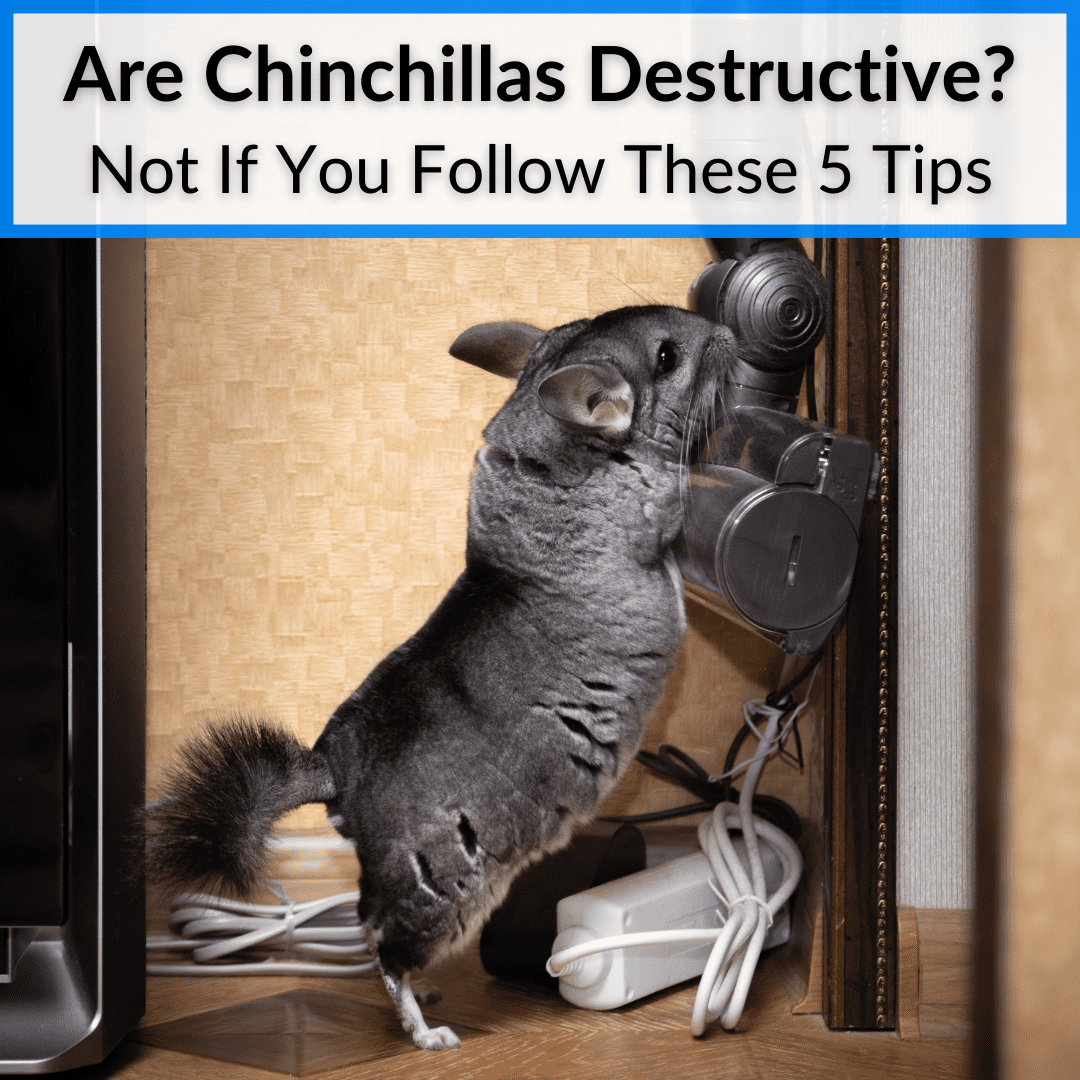
If you’ve talked to a number of chinchilla owners, you’ve likely heard a story of destructive chinchilla behavior.
The most common destructive behavior is chewing. These little rodents love to chew.
More than that, they need to chew.
But the truth is, they are not destructive. That behavior only comes out if they lack certain necessities.
Keep reading to learn all about destructive behavior in chinchillas and how you can easily keep it at bay.
Contents
Are Chinchillas Destructive?
No, chinchillas are not destructive. But they can be, if you don’t provide them the things they need.
Chinchillas need adequate toys to keep them busy and things to chew on to file down their teeth. They also need social activity and time out of the cage to prevent boredom.
It’s really as simple as that when it comes to owning a chinchilla.
I’m not saying that issues don’t arise from time to time, but overall, a chinchilla is extremely easy to care for.
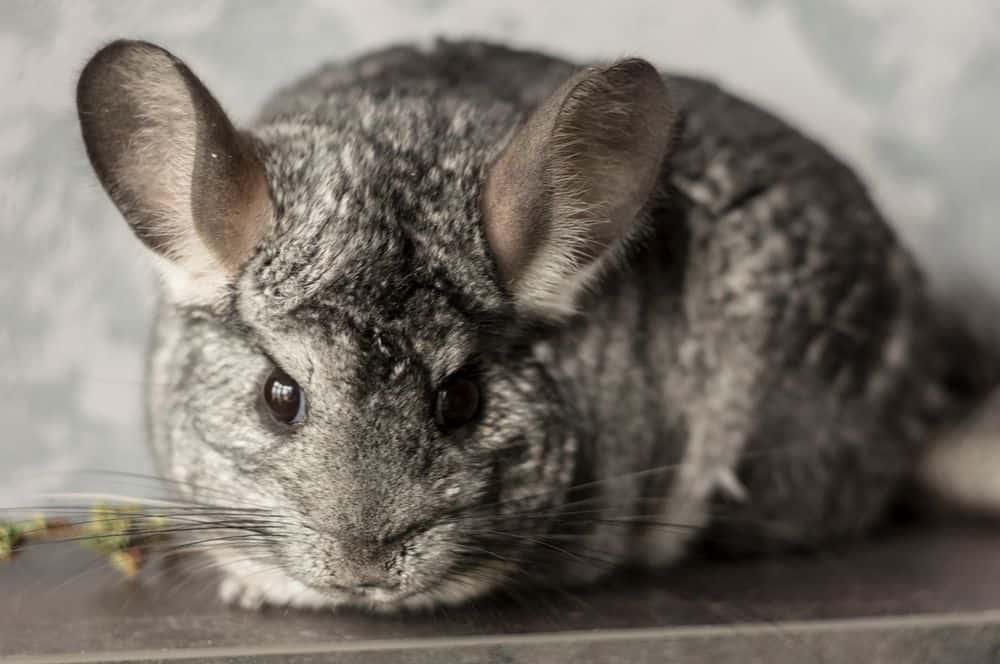
The issue is that they are relatively energetic during the hours that they are awake and they do love to jump and explore. They are also much smarter than they are often given credit for.
When boredom sets in, they can go a bit more chew crazy and possibly become what some pet owners would consider destructive.
And it’s not something that happens when they are out of the cage and being supervised (they should always be supervised when out of the cage.
Generally, if they get destructive, it’s going to happen when they are inside of the cage and you are not paying attention.
But not if you provide them plenty of entertainment. As long as you keep them from getting bored, they won’t become destructive.
That’s what the rest of this post is designed to teach you: how to keep your chinchilla from getting bored.
I’m going to break down what you can do as the owner to ensure your chinchilla remains non-destructive, happy, and healthy.
So let’s start out with 5 tips that should ensure your pet does not become destructive.
5 Tips For Preventing Boredom And Destructive Behavior
These are my top 5 tips to ensure you keep your chinchilla mentally and physically stimulated, in order to keep undesired and destructive behavior at bay.
The Right Chinchilla Cage Is Priority One
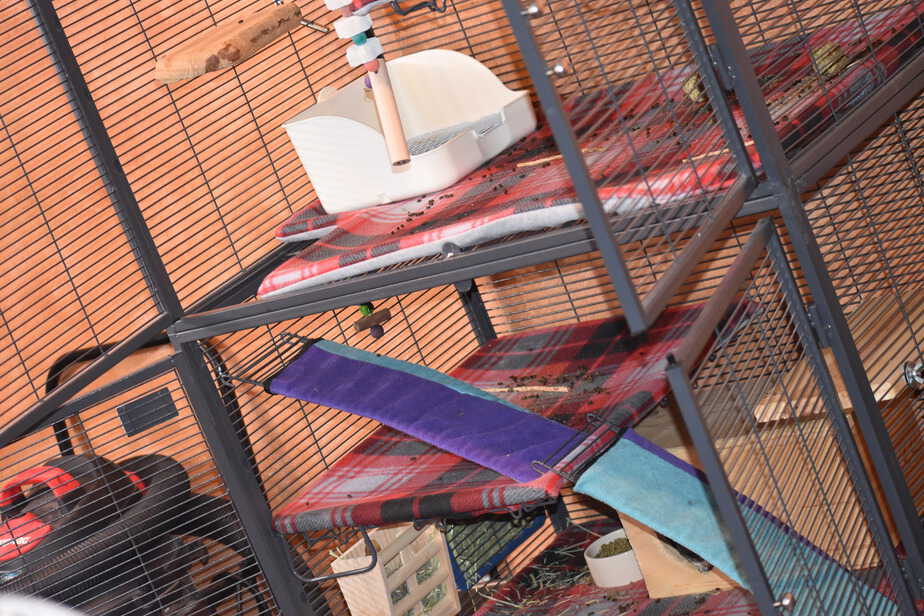
When adopting a chinchilla, everything begins with the cage. You want to make sure you buy the best chinchilla cage possible.
Chinchillas need the ability to climb vertically inside of the cage. They love doing so and are happiest when they can climb around to their heart’s content.
This means you need to purchase the correct size chinchilla cage. And the vertical size is always more important than the length or width.
I have been recommending the Critter Nation 2 Dual Level Cage for a long time now. It’s the cage I use myself for my pet and the best option on the market.
It has the height required, looks good, and can accommodate fleece liners to make your life easier and keep your chinchilla more comfortable.
Not to mention it only takes about 10 minutes to put together. It doesn’t get much better and much easier than that.
As for the fleece liners I mentioned, you can read more about them here. I use the Piggy Bed Spread Liners and I absolutely love them.
They take no time at all to clean, look much better in the cage than traditional bedding, help eliminate odor, and are more comfortable for your chinchilla overall compared to using something like a wire bottom cage with shavings.
If you need further information about the best chinchilla bedding options, read my post here.
Once you have the cage, you’ve got the biggest requirement sorted. But you still have some work to do. You’ll need to get some accessories placed inside of the cage to keep your chinchilla happy and stimulated.
Add The Correct Accessories To The Chinchilla Cage
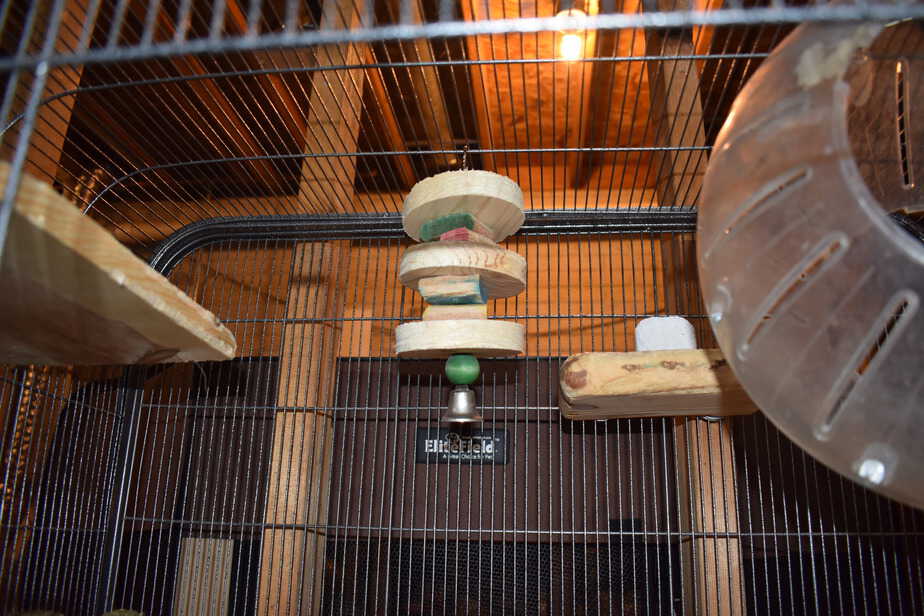
The next tip is to take that awesome chinchilla cage you just purchased and turn it into a real home for your chinchilla.
To accomplish this, you want to fill it with the best toys and accessories to keep your pet stimulated and happy.
This includes things like wooden ledges, a chinchilla wheel, a good nest box, and tunnels. All will help you create the ultimate chinchilla habitat.
Do chinchillas need a wheel, a nest box or tunnels? A nest box, yes. They need a place to hid and feel comfortable. The other two are not absolutely necessary, but strongly recommended.
To save you some time and make your life easier, here are some links that will take you to all my recommendations.
- To see the best chinchilla toys, head here
- To see the best chinchilla hammocks, go here
- You can find my post on the best chinchilla wheels here
- To learn more about providing the best tunnels for your chinchilla cage, read this post
- To understand which nest box is best and why chinchillas need a nest box, be sure to check out this post
Combining the right chinchilla cage with plenty of activities and things to do inside of the cage will curb any possible destructive behavior and excessive chewing.
If you skip these steps and don’t give your chinchilla much to do, then you can’t really complain when it gets a bit stir crazy and begins acting out.
Most pets would act the exact same way and there is absolutely no denying that. In fact, you would probably do the same thing yourself in the same situation.
Interaction And Socialize With Your Chinchilla
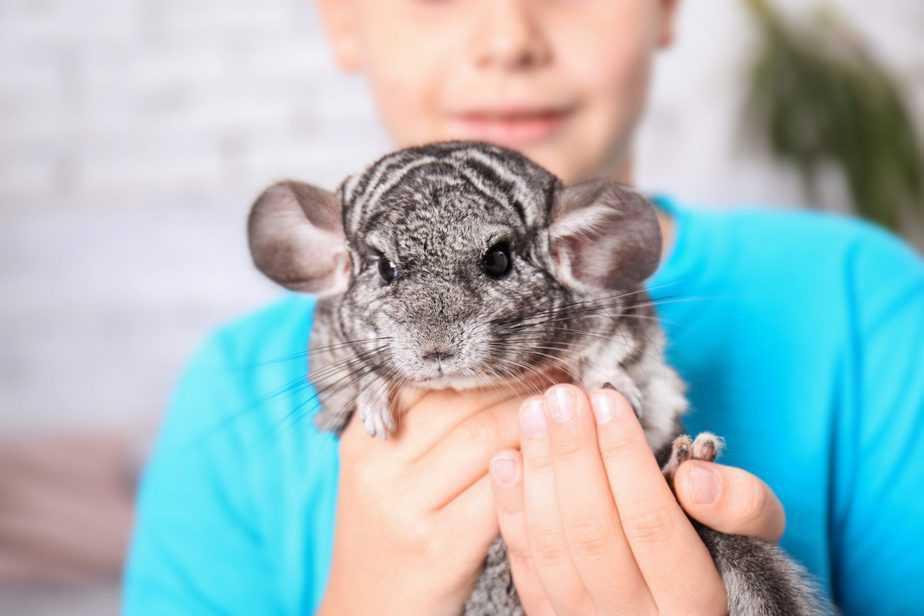
No matter how great you make your chinchilla’s cage, and no matter how many toys and chew sticks you place inside of it, you need to also understand that the chinchilla is a social animal.
Just because the cage is great and you provided plenty to do, it does not mean that you can skip playtime with your chinchilla.
Ideally, you should be providing time outside the cage to play daily.
Of course, the room where you play with your pet needs to be safe, to ensure you don’t run into issues like your chinchilla chewing wires or doing anything else hazardous to its health.
This also means having the room at the correct temperature and humidity level. You can view my post here covering how to do this correctly.
Ensuring you provide 30 minutes or so per day of playtime goes a long way toward making sure your chinchilla behaves.
A Second Chinchilla Never Hurts
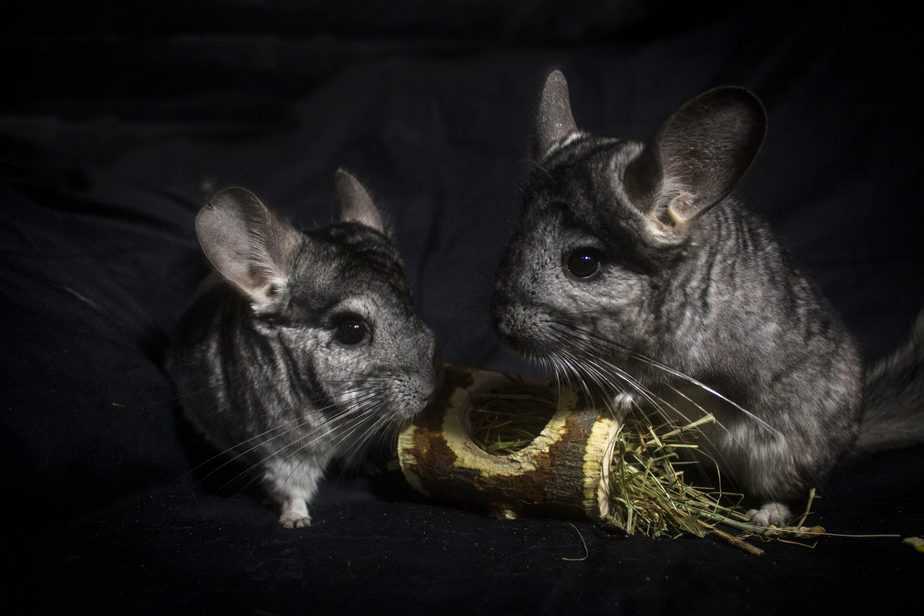
If all else fails and it seems your chinchilla is just pure lonely, you can always consider one of my favorite tips of all.
Simply purchase a second chinchilla and slowly introduce them and bond them together.
Typically, it is best to keep them in two separate chinchilla cages up against each other in the beginning phases.
Once it appears that the bonding is going well, the two chinchillas can move in together.
This is a quick way to fix a lack of social activity and prevent destructive behaviors not only now, but well into the future.
Provide All-Around Great Care
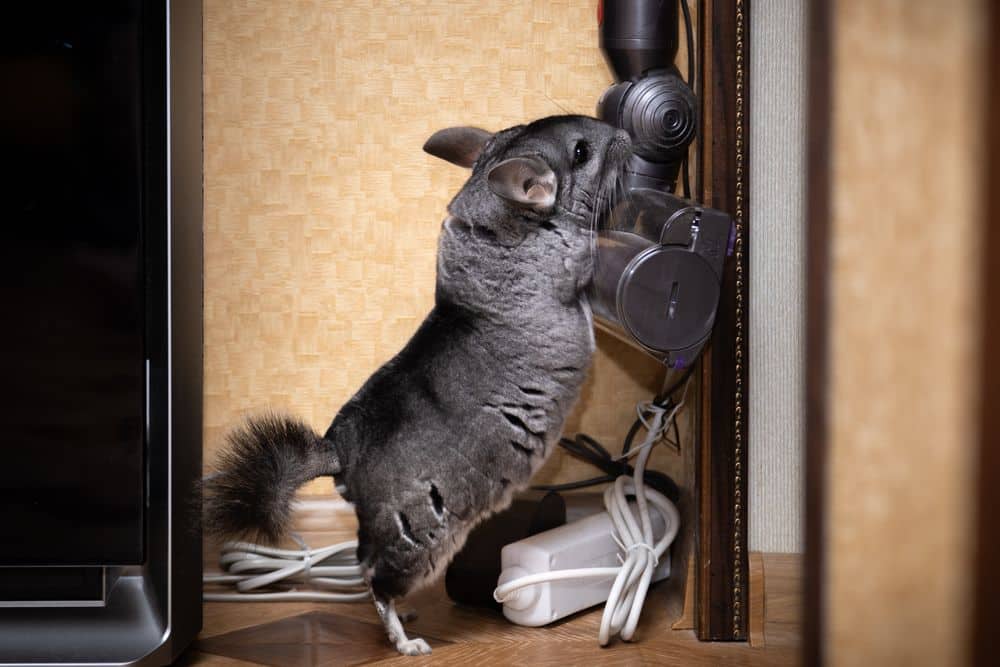
This is pretty broad, but no less important. Outside of providing the correct habitat and ensuring your chinchilla has what it needs inside and outside of the cage, you also just want to be a good pet owner.
Providing the best care possible is going to make for a happy chinchilla.
And in my experience, a happy chinchilla is a well-behaved chinchilla. Keep your pet happy and destructive behavior will be far and few between.
Do chinchillas like to act a bit crazy sometimes inside and outside of the cage?
Sure, who doesn’t get a bit wild from time to time? It’s part of life, and they are sure to do the same at some point.
However, following these tips and providing the necessary items discussed in this post is going to go a long way toward ensuring these bad behavior don’t occur often.
Destructive Behavior In Chinchillas: Final Thoughts
With the proper care and the correct items provided, chinchillas make one of the best pets you can adopt.
That’s a promise I’m comfortable making.
However, lack of care and not providing some of the items discussed in this post can lead to some behaviors that you would prefer not to deal with.
Prevent the destructive behaviors by giving your new furry friend precisely what it needs and watch the relationship grow and flourish.
I wish you the best of luck with your upcoming chinchilla adoption and a new adventure.
Share your thoughts on destructive chinchilla behavior below.
What tips could be added to this list that you have used to eliminate destructive chinchilla behavior?
Do you have any other recommendations or advice that you can provide the readers?
Be sure to share your stories, thoughts, and concerns by dropping a comment below.
As always, Chili and I appreciate you stopping by and reading.
Thanks again, and we will see you next time.
Leave a Reply